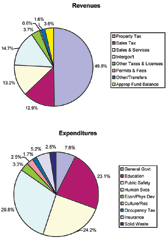- Commissioners ponder $317 million budget
- Residents decry proposed land-disturbance rules
Buncombe County’s economy remains in better shape than those of many other areas, County Manager Wanda Greene reported at the Buncombe County Board of Commissioners at their May 20 meeting. But rising costs, unemployment, foreclosures and a contracting housing market will create some challenges—about $6.9 million worth—for the 2008-09 budget. That’s how much the county may have to withdraw from its reserves to balance the budget for the next fiscal year, which begins July 1, unless the deficit can be made up via budget cuts.

“While we have no idea today how we’re going to find that, we’ll start working on that in a matter of days, so we know where we can cover our costs to save this $6.9 million,” said Greene. Possibilities include cutting vacant positions, slowing down the hiring of new employees—or even a full hiring freeze, she said later.
With thunder from a brief storm booming in the background, Greene gave an overview of the proposed $316.8 million budget, the bulk of which would go for public safety, education and human services. And though the proposal calls for maintaining the current property-tax rate (52.5 cents per $100 of assessed value), expenses are rising, fueled by increased costs for energy, food and construction.
“We consistently hear that the economy is not good, that people are hurting—and I absolutely believe that to be the truth,” Greene told the board. “We also hear that it’s the unknown that scares people. When I fill up my car, I know what scares me: $4 a gallon is very frightening. Rising prices at the pump are eating into our funds.”
Additionally, she said, the county has issued 200 fewer building permits this year than in 2006-07.
That prompted board Chair Nathan Ramsey to break in, noting, “But compared to many places, we’re in very good shape as far as the building permits.”
“We are,” conceded Greene. “The value has not dropped as much as the number of permits. Our revenues from real-estate transfers have fallen a little over 10 percent. Real-estate folks say that houses are staying on the market a lot longer—and the more expensive the house, the longer it stays. There’s still a market for houses under $300,000 to $400,000.”
Foreclosures are also up, and unemployment has climbed from 3.6 percent last year to 4.3 percent now.
“The chairman’s right—we’re not in as bad a situation as some other places, but we’re taking this seriously,” she said.
Meanwhile, education costs are predicted to rise by $3.1 million compared with last year, due mostly to state-mandated changes, utility increases and better pay for teachers.
But there is some good news, said Greene: A state program that uses a half-cent of sales-tax revenues to cover Medicare costs the county previously had to pay is already producing considerable savings—and could save Buncombe County $6.7 million in the new fiscal year.
“When you think about economically challenging times, it’s an even better deal, because sales tax doesn’t grow and Medicaid prices rise even more,” noted Greene.
The county has also bought new software that can determine people’s eligibility for federal aid programs in three to five minutes and issues them a single ID card they can use for all the county’s safety-net programs. This, said Greene, should cut costs and help these services reach more people.
The commissioners appeared content with the budget, approving a June 3 public hearing. Commissioner David Young singled out the county manager for praise.
“This is a product of great leadership,” he said. “In times when people are struggling, I’m proud we’re keeping the tax rate at 52.5 cents. It’s a very reasonable and fair rate for our citizens to pay.”
Not everyone seemed pleased, however. Earlier, Enka resident Jerry Rice took issue with the lack of transparency in determining educational expenditures.
“Buncombe County Schools have not [come before the commissioners] this year, and here we’ve got one of the biggest budgets for schools yet—and they’re just over there by themselves, with no accountability to come here,” said Rice. “We need to hear from the schools themselves and not just from the county manager. The dropout rate is a big issue. You need to be more responsible and bring them to the table,” he scolded.
Rice also criticized the amount of money earmarked for nonprofits. “They’re not accountable to anybody,” he said, adding, “It’s nothing but a big voting bloc.”
A brighter future for local farming
by Kent Priestley
The economic contribution of Buncombe County’s agricultural sector is impressive, accounting for some 1,200 individual farms spread over 95,000 acres and producing roughly $22 million in annual receipts.

Yet despite the growing popularity of “eating local,” agriculture is imperiled here. Rising property values, encroaching development and the advancing age of the typical farmer are all limiting the industry’s viability, now and in the future.
Seeing the need for a measured, tactical approach to preserving and enhancing the county’s agricultural sector, the 10-member Buncombe County Agriculture Advisory Board has drafted an “Agricultural Development and Farmland Protection Plan for Buncombe County,” which it presented during the Board of Commissioners May 20 meeting.
The plan calls for funding new conservation easements in the county, a proven and increasingly common way of keeping land in agricultural production and off-limits to development. It also directs the county to enhance its current Agriculture District Program by giving farmers a greater financial incentive to participate.
Keeping agriculture alive will require better information, and the plan addresses that as well, in the form of mapping projects to prioritize parcels for conservation.
The plan also calls for supporting local markets, including using Blue Ridge Food Ventures for value-added products, developing a regional sales facility for livestock, and creating new processing facilities for small livestock to help locally raised meat get to market.
Of course, none of this answers the question of where the farmers of tomorrow will come from. But the plan has an answer for that too. Through the Cooperative Extension Service, it aims to promote the development of a database of available properties as well as support-and-consultation services for would-be farmers, to help them get their fingers in the dirt.
The commissioners were unanimous in their enthusiasm for the plan. “Get it on as fast a track as we can,” said Commissioner Bill Stanley.
“Excellent,” said Vice Chair Carol Peterson.
Greene replied that any nonprofit receiving money from the county has to open its books and provide extensive data on its operations, emphasizing that the maximum amount of support is heavily restricted.
The commissioners said they expect to vote on the budget on June 3 following the public hearing.
Loosening the rules?
During the public-comment period, some residents voiced concerns about proposed changes to the county’s subdivision rules, which will probably come up for a vote in June or July.
Al Gumpert asserted that not including things like cutting scattered trees and removing vines or fallen trees in the technical definition of “land disturbance” would be a mistake.
“The net result of this loosely defined, impossible-to-enforce change would be [that] at the developer’s discretion, he can disturb—beyond the allowable amount of his permit—any portion he’s not previously disturbed,” Gumpert told the board. “This may violate the state’s sedimentation-control laws. Any removal of vegetation is detrimental to the state of steep-slope property.” He urged the commissioners to reject the changes.
County resident Joe Sechler sounded a similar note, calling the changes a “convoluted subject” that cuts across multiple existing ordinances. County staff, he maintained, should provide the commissioners with all the relevant existing rules the revisions would be modifying.
“Ask them to highlight all the references to land disturbance, so you can see how extensive this is,” said Sechler. “This could have a profound impact. Previous changes have tried to tighten up the rules on steep-slope ordinances; this would just complicate them.”
County staff have previously asserted that the new rules would actually tighten the overall restrictions on steep-slope development, and would conform to the state’s storm-water regulations.
To read the budget and farm plans, go to www.mountainx.com/xpressfiles.



Public schools exploit childless taxpayers! And land use regulations raise rents! Cut the Planning Dept and the Schools!
For some reason, beef cattle prices have not risen with grain, milk, and retail meat. I think those feeding grain to cattle are still selling off excess herds and it has yet to turn around, consistant with the growing price gap between steers and cows. So most local farms have not gained the way flatland farms are gaining, and I wasn’t going to wait anymore because I am for HOUSING!
We are most all in favor of protecting our farms.
We need to be real careful, sensitive and intelligent when introducing new layered zoning in the county which will limit or prohibit land use. These type decisions need to be carefully discussed and not RUSHED through the establishing of new Laws. Especially that which could negatively impact property values owned by generations of farmers who have been hanging on tooth and nail to keep there land to some day sell it at the highest possible value. Unfortunately development (Residential and Commercial) as well as Cemeteries are the highest and best use (value wise). Limiting density is very effective finding more equal a common ground in many cases. Thus new programs designed to instill Conservation Easement incentives should equally compensate those owners. Some ideas introduced will actually render prime property at less than one forth of its current value. We do not want to punish the families that have owned and maintained these properties only for the sake of creating affordable farming. Adverse to the affordable housing which requires maximum density and increased site values, limitations in farm land uses will create limitations on use and density thus devaluing the real property value in return for creating “affordable farming” which is fine so long as the Land Owner is compensated for the differences in value surrendered or lost. This is a slippery slope. Approach with CAUTION.